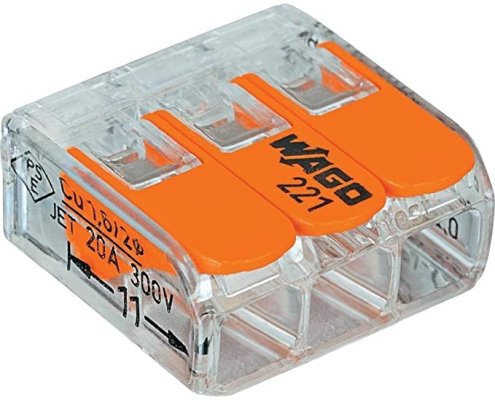HopCar
Guru
- Joined
- Aug 20, 2011
- Messages
- 5,311
- Vessel Name
- Possum
- Vessel Make
- Ellis 28
I’ve just become aware of a wire connector called a Wago 221 lever nut.
It looks like a much better connector than a wire nut for shore side use but is it good enough for use on boats?
Has anybody used these? What do you think?
It looks like a much better connector than a wire nut for shore side use but is it good enough for use on boats?
Has anybody used these? What do you think?

